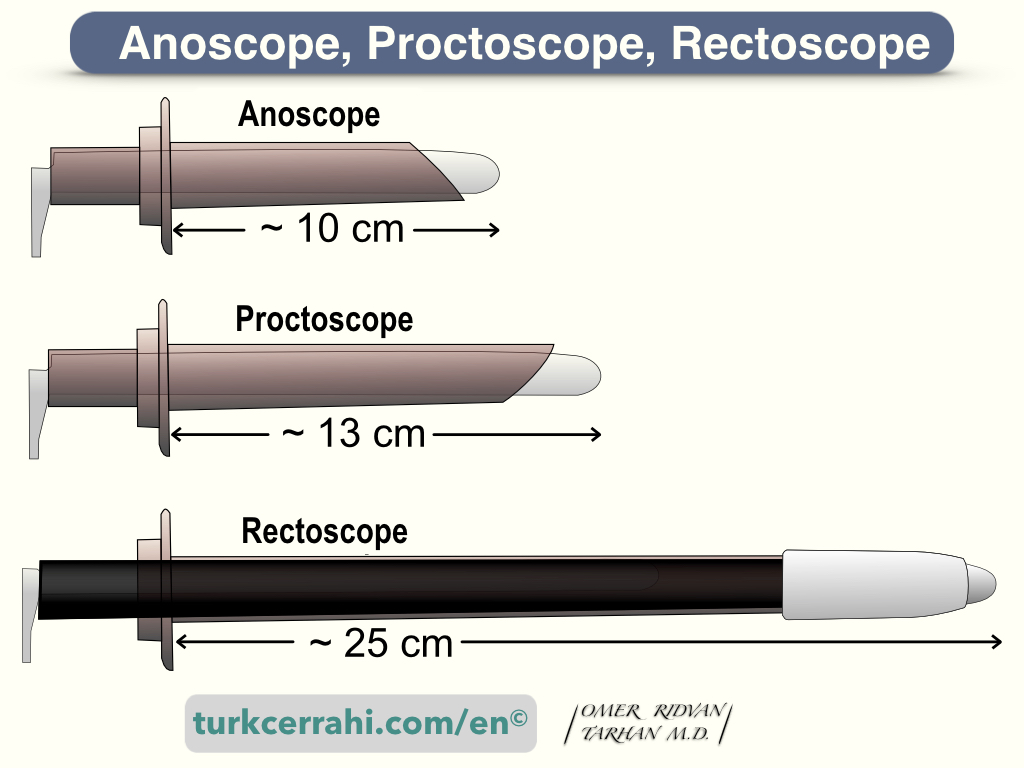Anoscopy

- Image retrieved from Wikipedia on 24 May 2023. Mikael Häggström the copyright holder of this work, release this work into the public domain. Image’s Page
Anoscopy literally means “looking inside the anal canal.” Anoscopy involves inserting an anoscope, a small, rigid, illuminated tube-shaped instrument, a few inches into the anal canal. Hemorrhoids, anal fissures, and cancer are diagnosed with anoscopy.
Procedure
This examination is typically administered in an outpatient setting.
Anoscopy can be performed with the patient in several positions, depending on the preference of the healthcare provider and the availability of equipment. The most common positions for anoscopy are:
- Prone knee-chest position: When an anorectal examination table is available, the patient lies face down with their knees bent. In this position, the patient’s buttocks are elevated with the knees and hips flexed
- Prone position: The patient lies face down on the exam table with their hips elevated and their knees slightly flexed. This position is useful when an anorectal examination table is not available.
- Knee-chest position: The patient kneels on the exam table with their hips and knees flexed, and their chest and head resting on the table. This position provides the best access to the anus and rectum.
- Sims position: The patient lies on their left side with their left leg straight and their right leg bent. This position allows the anus and rectum to be easily accessed and visualized.
- Lithotomy position: The patient lies on their back with their legs raised and supported in stirrups, which are positioned so that the patient’s buttocks are at the edge of the examination table.
Is anoscopy painful?
Anoscopy is generally not a painful procedure, although patients may experience a sensation of pressure, an urge to defecate, or discomfort during an anoscopy. However, the discomfort is usually minimal and brief, and the majority of patients do not experience significant pain during an anoscopy.
Patients may experience significant discomfort or pain during an anoscopy if they have an anal fissure. In this case, a digital rectal examination or anoscopy can be delayed until the fissure has healed.
Is there a prep for anoscopy?
Yes, there may be some preparation needed before an anoscopy. In general, the patient may be asked to have a bowel movement or use an enema to empty the rectum before the procedure. This can help ensure that the anoscope provides a clear view of the anal canal and rectum. Anoscopy, unlike a colonoscopy, usually does not necessitate a full bowel prep.
How long does anoscopy procedure take?
An anoscopy procedure typically takes about 5 to 10 minutes to complete.
What is the difference between an anoscopy and an endoscopy?
In fact, anoscopy is an endoscopic procedure used to examine the anus and distal rectum. An anoscope is a small, rigid, illuminated, tube-shaped endoscope. Anoscopy is usually performed in an outpatient setting and does not require any sedation or anesthesia.
Endoscopy, on the other hand, is a more general term that involves examining the interior of the body with a flexible or rigid instrument called an endoscope. Endoscopy can be used to examine various parts of the body, including the digestive tract, respiratory tract, urinary tract, and reproductive system. Endoscopy may require sedation or anesthesia and can take longer to perform than an anoscopy.
Diseases Diagnosed by Anoscopy
- Hemorrhoids: Swollen and inflamed veins in the anus or lower rectum.
- Anal fissures: Small tears in the lining of the anus.
- Anal fistulas: Abnormal tunnels or connections between the anus and surrounding tissue.
- Anal abscesses: Pockets of pus that form near the anus.
- Anal / rectal tumors-cancer
- Proctitis: Inflammation of the rectum and anus.
Anoscopy can also be used to perform biopsies or remove small polyps for further examination.
« Return to Dictionary